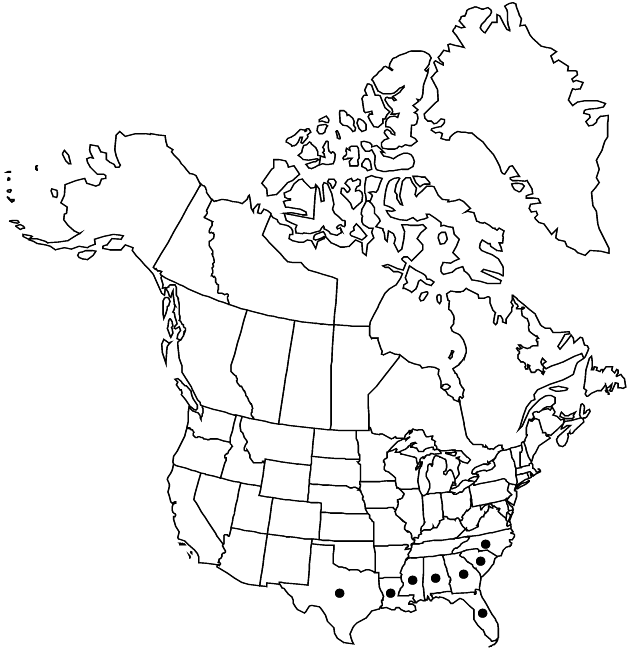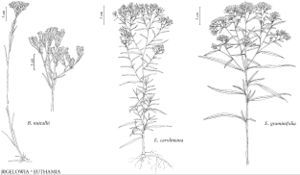Bigelowia nuttallii
Sida 3: 460. 1970.
Common names: Nuttall’s rayless-goldenrod
IllustratedEndemic
Treatment appears in FNA Volume 20. Treatment on page 96.
Plants with rhizomelike caudex branches (becoming colonial or loosely matted). Leaves linear, (3–)6–14 × 1–2 mm, bases persistent (± sheathing branches of caudices). Involucres 5–8 mm. 2n = 18, 36, 54.
Phenology: Flowering Sep–Oct(–Nov).
Habitat: Sandstone and siltstone substrates, often over outcrops, also commonly in sand and sandy-loam, rarely over gneiss, dry habitats to wet savannas or seepage slopes
Elevation: 100–300 m
Distribution
Loading map...

Ala., Fla., Ga., La., Miss., N.C., S.C., Tex.
Discussion
The geographic distribution of Bigelowia nuttallii is discontinuous, skipping from its area of greatest abundance in Texas and central Louisiana to scattered sites in northeastern Alabama, Georgia, and Florida (where partially sympatric with B. nudata var. nudata). Polyploids are known in populations in Georgia and Florida and are morphologically indistinguishable from the diploids.
Selected References
None.
Lower Taxa
None.
